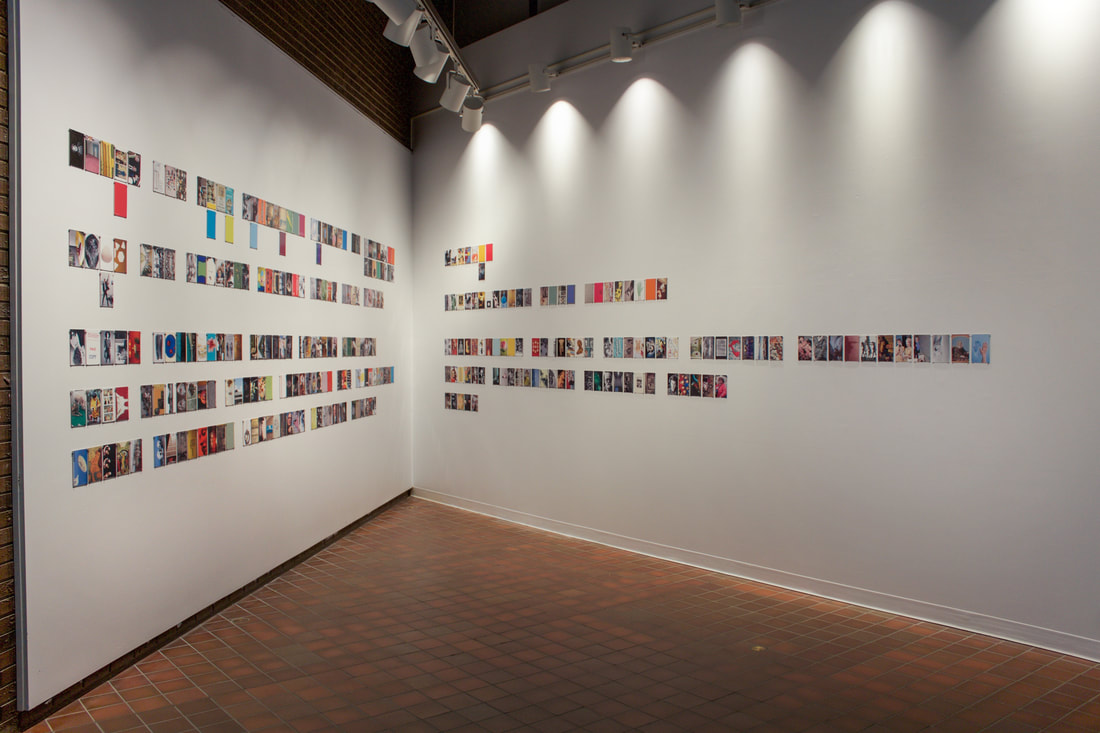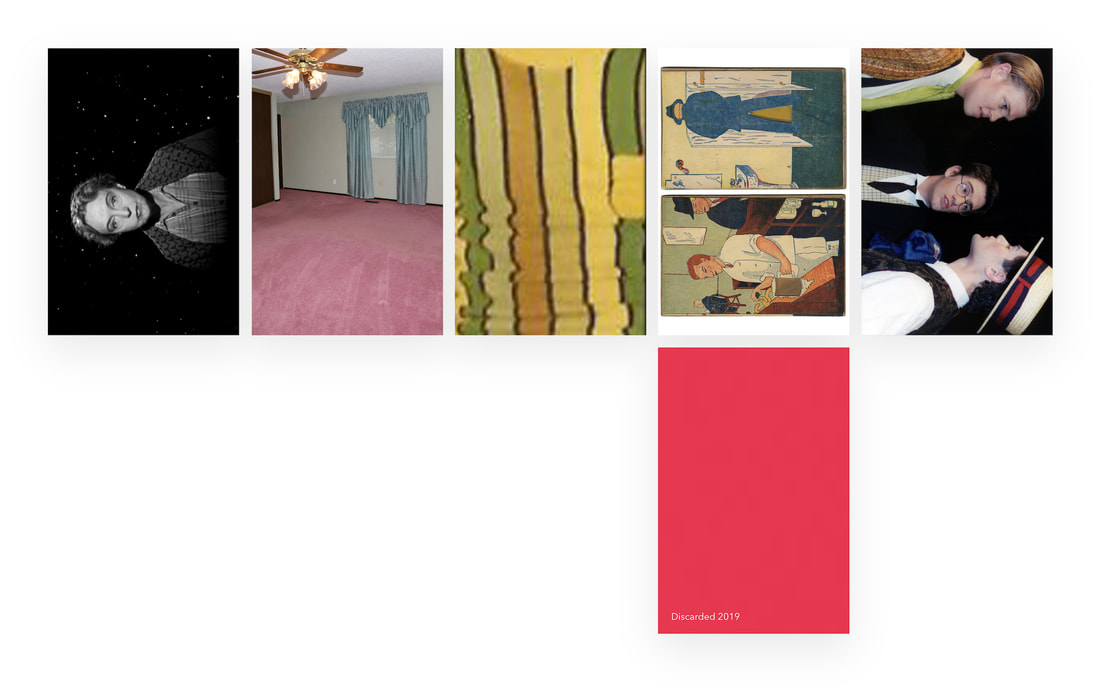The Thought That Counts (2019-2020)
found photographs, text
(this page is under construction)
found photographs, text
(this page is under construction)
Above: The Thought That Counts, installation view
Each image presented represents one individual who graduated from the University of Alberta with an MVA/MFA degree between 1972 and 2015, based on the documentation present in the University of Alberta Department of Art and Design Thesis Collection, formerly a closed stack collection of the University’s Rutherford Library. Following their deaccession, the collection was placed in room 1-20A, a closet within a closet, which also contained financial records and departmental Christmas decorations. Despite reports to the contrary, the documents have not been digitized*.
Works are sorted chronologically by date of thesis defence, or, when the date is not known, alphabetically following the last dated defence in the year of graduation. Using titles of works presented as part of each final exhibition, images were generated from Google’s image search function, and chosen at random. In only two cases did the work being searched for appear––Janet Cardiff and Matthew Rangel.
For artists whose thesis documents are absent from the archive, solid coloured panels are present, derived from Google’s placeholder images displayed when internet connectivity interrupts a search, in this case for the name of the missing artist. Thesis documents may be lost due to misplacement, theft, or casual deaccession, cases where the individual did not present a final document to the archive, and in instances where a final presentation occurred but the individual did not receive a degree. Names of missing artists are derived from departmental records. Beginning in 2016 academic year, all theses have been submitted electronically, and are likewise missing from the physical archive.
Text panels contain corresponding information derived from the text of each thesis document to aid interpretation: artist name, title, media, and date of work, and a section of each artist’s statement. All spelling and punctuation is presented as it appears in the original theses.
It’s the thought that counts.
*History of Art, Design, and Visual Culture MA and PhD theses, as well as certain Master of Design theses, have been scanned and uploaded to the University of Alberta’s online research archive.
Each image presented represents one individual who graduated from the University of Alberta with an MVA/MFA degree between 1972 and 2015, based on the documentation present in the University of Alberta Department of Art and Design Thesis Collection, formerly a closed stack collection of the University’s Rutherford Library. Following their deaccession, the collection was placed in room 1-20A, a closet within a closet, which also contained financial records and departmental Christmas decorations. Despite reports to the contrary, the documents have not been digitized*.
Works are sorted chronologically by date of thesis defence, or, when the date is not known, alphabetically following the last dated defence in the year of graduation. Using titles of works presented as part of each final exhibition, images were generated from Google’s image search function, and chosen at random. In only two cases did the work being searched for appear––Janet Cardiff and Matthew Rangel.
For artists whose thesis documents are absent from the archive, solid coloured panels are present, derived from Google’s placeholder images displayed when internet connectivity interrupts a search, in this case for the name of the missing artist. Thesis documents may be lost due to misplacement, theft, or casual deaccession, cases where the individual did not present a final document to the archive, and in instances where a final presentation occurred but the individual did not receive a degree. Names of missing artists are derived from departmental records. Beginning in 2016 academic year, all theses have been submitted electronically, and are likewise missing from the physical archive.
Text panels contain corresponding information derived from the text of each thesis document to aid interpretation: artist name, title, media, and date of work, and a section of each artist’s statement. All spelling and punctuation is presented as it appears in the original theses.
It’s the thought that counts.
*History of Art, Design, and Visual Culture MA and PhD theses, as well as certain Master of Design theses, have been scanned and uploaded to the University of Alberta’s online research archive.
Above: The Thought That Counts, detail, 1972 (l-r: Richard Chenier "Chiarascuro III", Lois Whitford "A1 73", Ruth Beer "Alberta '71", John Freeman "Moveable Image" (above) "One Way" (below), Ian Cooke "Maxmillan")


